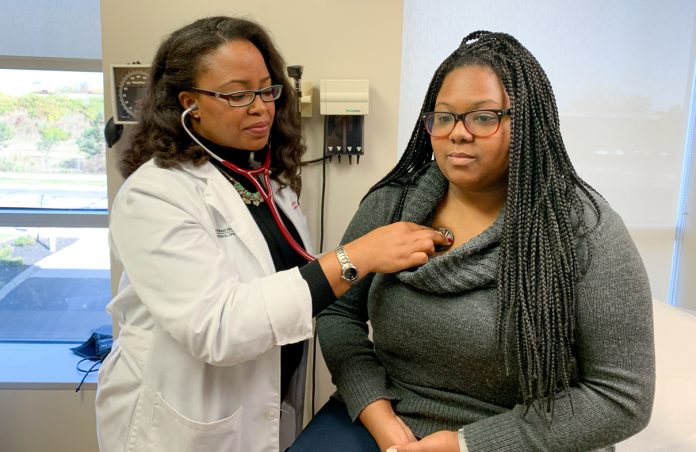
New research from The Ohio State University Wexner Medicine Center identifies a gap in doctor knowledge and understanding of hair care as a barrier to exercise among African American female patients.
The study, published in the Journal of the American Board of Family Medicine, found an overwhelming majority of primary care doctors talk to their African American female patients about the importance of exercise as part of a healthy lifestyle, but three quarters of them never discuss how hair care affects physical activity.
“As physicians, if we don’t have those specific conversations, we’re not doing everything that we can to decrease this barrier and help African American women overcome what they feel is holding them back from exercise,” said Dr. Sophia Tolliver, a family medicine physician at The Ohio State Wexner Medical Center who led the study.
Tolliver surveyed doctors, nurse practitioners and physician assistants in the Department of Family Medicine at Ohio State, a large urban academic medical center. Ninety-five percent of respondents sometimes/often engage in discussions with African American female patients about exercise. However, 76 percent of respondents have never included a hairstyling or maintenance assessment in that discussion and only 34 percent noted being comfortable discussing the topic.
According to the Centers for Disease Control and Prevention, 56 percent of African American women age 20 and over are obese, putting them at higher risk of heart disease, diabetes and stroke. Regular exercise can prevent or help manage these health conditions.
Exercise is a part of Kristian Mines’ daily life. She used to avoid exercise because of how sweat affects her hair, but she has found a style that she can easily preserve after a workout. (The Ohio State University Wexner Medicine Center)Tolliver’s research highlights the need to incorporate this cultural competency into continuing medical education and medical education curriculums to improve the doctor-patient relationship, which could have a lasting impact on the long-term health outcomes of African American females.
“It’s going to come down to increasing education about African American hair, African American females cultural practices when it comes to hair and how you can counsel a patient in an office visit about decreasing that barrier,” said Tolliver, who is also a clinical assistant professor of family medicine at The Ohio State University College of Medicine.
Tolliver says African American women interested in increasing physical activity can incorporate the following tips to preserve hairstyles while exercising:
• If you’re new to exercise, consider starting with a low-impact exercise such as walking to minimize perspiration.
• Try a protective hairstyle such as braids, twists, buns or extensions to help you optimize time spent working out.
• Schedule more strenuous workouts on the day you plan to wash your hair.
© 2019 Metro Monthly. All rights reserved.




